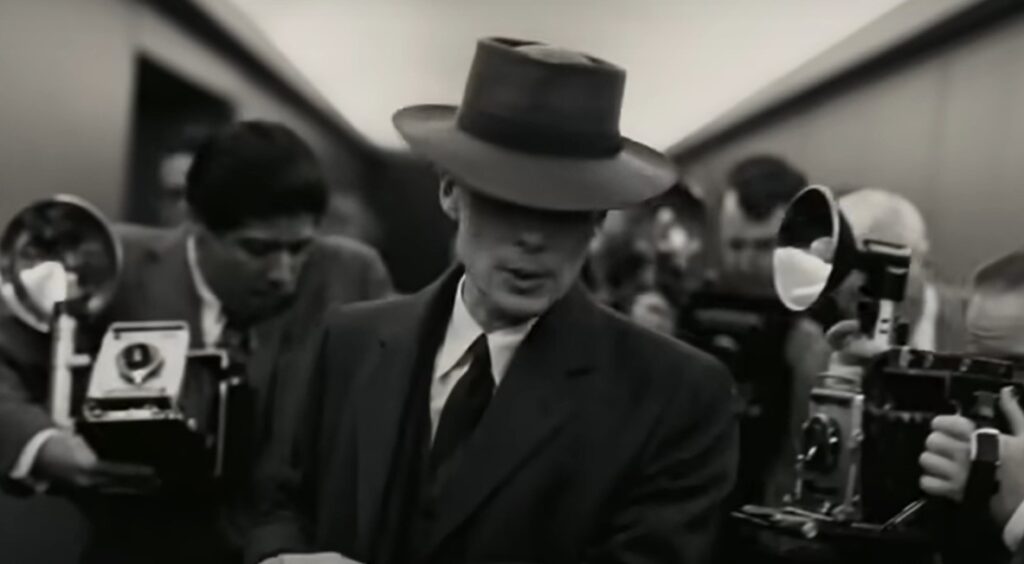In what can only be described as a cinematic tour de force, Christopher Nolan returns to the big screen with “Oppenheimer,” a visually grand and emotionally charged saga of J. Robert Oppenheimer, the man behind the atomic bomb. Fueled by Nolan’s signature technical flair and storytelling prowess, the film weaves an intricate narrative that delves into the limitless realms of human ambition, scientific achievement, and the harrowing consequences of war.
Nolan’s masterful storytelling transports audiences through time and space, as he presents Oppenheimer’s journey with an artistic brilliance that leaves viewers awestruck. The film strikes a delicate balance between visual splendor and emotional intimacy, offering a sublime combination that captures the essence of Oppenheimer’s complex legacy.
At its core, “Oppenheimer” emerges as a profound exploration of ethical questions surrounding the American physicist’s contributions to science and the devastation wrought by his creation. While delving into the genius of quantum physics, Nolan seamlessly intertwines the tragic tale of a man who inadvertently triggered a dangerous arms race.
Clocking in at three hours, the epic unfolds as a timeless morality tale that reaches far beyond its historical setting. Nolan and his cinematographer, Hoyte van Hoytema, expertly harness diverse narrative elements to create an engrossing story that encompasses science, war, and political intrigue.
Remarkably, the film navigates its thematic depths without resorting to graphic images of the Hiroshima and Nagasaki bombings, a testament to Nolan’s ability to provoke introspection and evoke emotions through his storytelling.
Oppenheimer Unveils the Dark Realities of Human Endeavor

Cillian Murphy delivers a powerful performance as J. Robert Oppenheimer, showcasing the physicist’s brilliance and the weight of his conscience as he grapples with the repercussions of his deadly invention. Oppenheimer’s wife, Kitty, portrayed by Emily Blunt, and his affair with the firebrand Communist Jean Tatlock, played by Florence Pugh, add compelling layers to the story, further humanizing the enigmatic figure.
Nolan’s screenplay intricately weaves together multiple timelines, presenting Robert’s life as a shifting mosaic of success, struggle, and moral conflict. From his days as a student in the 1920s to his twilight years, haunted by his controversial legacy, the film captures the full spectrum of the physicist’s journey.
The film’s pacing, credited to Jennifer Lame’s masterful editing, maintains sustained momentum throughout. Intercutting between the core of the Manhattan Project in the mid-1940s, Oppenheimer’s 1954 security clearance inquiry, and a 1959 confirmation hearing for Admiral Lewis Strauss, Nolan crafts a kinetic energy that propels the narrative forward.
Drawing inspiration from the acclaimed biography “American Prometheus: The Triumph and Tragedy of J. Robert Oppenheimer,” the film seamlessly melds historical accuracy with Nolan’s visionary storytelling. The movie demands absolute attention, leaving audiences immersed in a thought-provoking and thrilling experience.
In a triumphant return to the big screen, Christopher Nolan’s “Oppenheimer” elevates cinema to new heights. With its mesmerizing blend of science, war, and human drama, the film solidifies Nolan’s status as a visionary filmmaker. It is a captivating journey that challenges viewers to contemplate the ethical complexities of human ambition and the haunting consequences of history-defining decisions.

